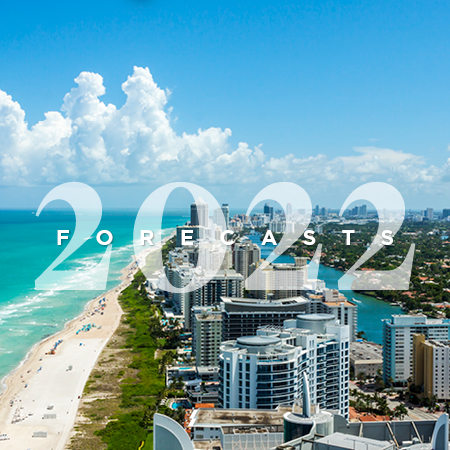It is unlikely that Omicron will derail the stabilisation that 2021 brought to the North American economy and its commercial real estate markets. There are signs of recovery across many sectors, and with the beginning of 2022 comes hope that this positive momentum will prevail, presenting myriad investment opportunities in the months to come.
US unemployment has been improving from the 14.7% peak of April 2020 (although at a slower pace since Omicron emerged), and stood at 4.2% in November 2021. Labour force participation continues to increase, and there is underlying momentum in the labour market.
The US capital markets recovery is fully underway with commercial sales volumes of $196 billion during the third quarter – a record-high. Multifamily and industrial product (including life sciences R&D space) accounted for more than 60% of this volume and will continue to be areas of focus.
Pent-up demand and market stabilisation will fuel higher levels of investment volumes throughout 2022 though interest rates will be closely watched as the Fed is expected to raise interest rates in the coming year to address inflationary concerns. Office demand bounced back substantially in the third quarter, and at the time of writing, it appears that the fourth quarter will close with the strongest leasing volume seen since the start of the pandemic.
Many companies continue to delay return-to-office plans to keep employees safe, however organisations seem far more confident in making longer-term office real estate decisions now than at any prior point during the past two years.
The tech sector continues to lead demand as the five prominent American tech giants expand in key talent hubs and make investment in buildings that will incentivise in-office employee collaboration and satisfaction, even as hybrid work policies remain.
Demand for industrial space continues at a record pace and vacancy has dropped to 4.5% on average across the US. It is now as low as 2.0% in key markets like Southern California and Northern New Jersey. Given current supply chain issues, occupiers are expanding into new industrial markets across the country to reduce reliance on specific ports and transportation networks. As a result, 68 metro areas across the US and Canada are forecast to see at least 10 million square feet of new warehouse construction over the next five years.
2022 North America Tips
- Prime logistics/warehouses in traditional industrial gateway locations (Northern New Jersey, Southern California, Dallas-Fort Worth, Midwest) and last-mile delivery opportunities for major urban markets; Amazon remains primary target.
- Life sciences and biotech or other similar uses as the sector continues to experience growth; Cambridge, San Diego, Maryland/Virginia.
- Prime Grade A office buildings in traditional gateway and emerging innovation cities such as Austin and Nashville with in-place long-term leases to high credit tenants; focus on mission critical/strategic locations.
- Multifamily in traditional urban markets as the sector has recovered from pandemic challenges and demand remains high.
- Prime office in the core of traditional gateway markets with current or near-term vacancy and capital requirements; access to transportation key.
- Office in tax-friendly locations which will benefit from corporate relocations away from high-tax jurisdictions like California and New York; Focus on Dallas/Houston/Austin, Nashville, Orlando/Tampa/Miami.
- Secondary offices in traditional gateway markets as well as suburban office product in need of repositioning and a new lease following repositioning.
- Older multifamily product in need of substantial renovation and in locations where there is, or is expected to be, positive demographic migration.
- Distressed office and hospitality assets in traditional gateway and key leisure markets either through note sale purchases, rescue capital injections or those properties coming out of foreclosure proceedings. Core hospitality has rebounded, though change in travel patterns due to covid variants remains uncertain.
- Retail in core urban and suburban markets through a repositioning and re-leasing or an adaptive re-use of properties.
- Development in core markets as a counter-cyclical move with delivery of product in an expected-to-be recovered market.
- Senior and assisted living facilities with an opportunity to enhance the facilities for a post-pandemic environment.
- Bifurcation of assets into fee and leasehold to enhance current cash yields and reduce equity requirements.




